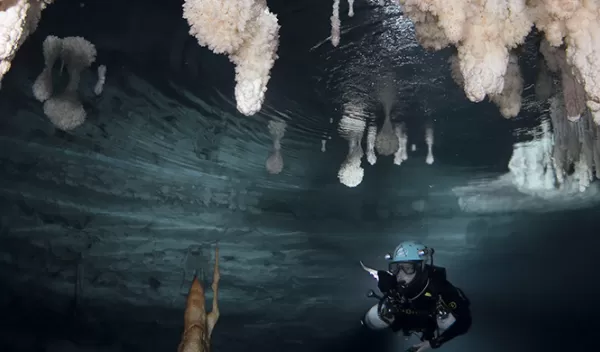
Spanish cave's submerged land bridge reveals that humans colonized the western Mediterranean earlier than thought
When did humans colonize the western Mediterranean? New U.S. National Science Foundation-supported research shows that it may be much earlier than archaeologists thought. The study was conducted on the Spanish island of Mallorca, where a 25-foot-long submerged land bridge in a cave provided new evidence.
The results are published in the journal Nature Communications Earth & Environment. The previous understanding of humans' arrival on Mallorca was that colonization happened around 4,400 years ago. However, according to Bogdan Onac of the University of Florida, the lead investigator on the project, humans arrived nearly 6,000 years ago. Mallorca is the sixth largest island in the Mediterranean and was the last to be colonized.
To find evidence of the timing, Onac and his collaborators at Harvard University, the University of New Mexico and the University of the Balearic Islands used scuba gear to dive to the depths of Mallorca's Genovesa Cave. What were once aboveground passageways in the cave have been inundated by rising seas. Calcite encrustations and the submerged land bridge enabled researchers to track sea-level changes and derive the new date.
"Our findings imply that early settlers recognized the importance of Genovesa Cave's water resources and strategically built infrastructure [the now-submerged bridge] to navigate the cave," says Onac.
Scientists “entered the cave to explore climate but emerged with a deeper understanding of people and society," adds David Verardo, a program director in the NSF Division of Atmospheric and Geospace Sciences.
For more information on this story, please visit the University of Florida.
